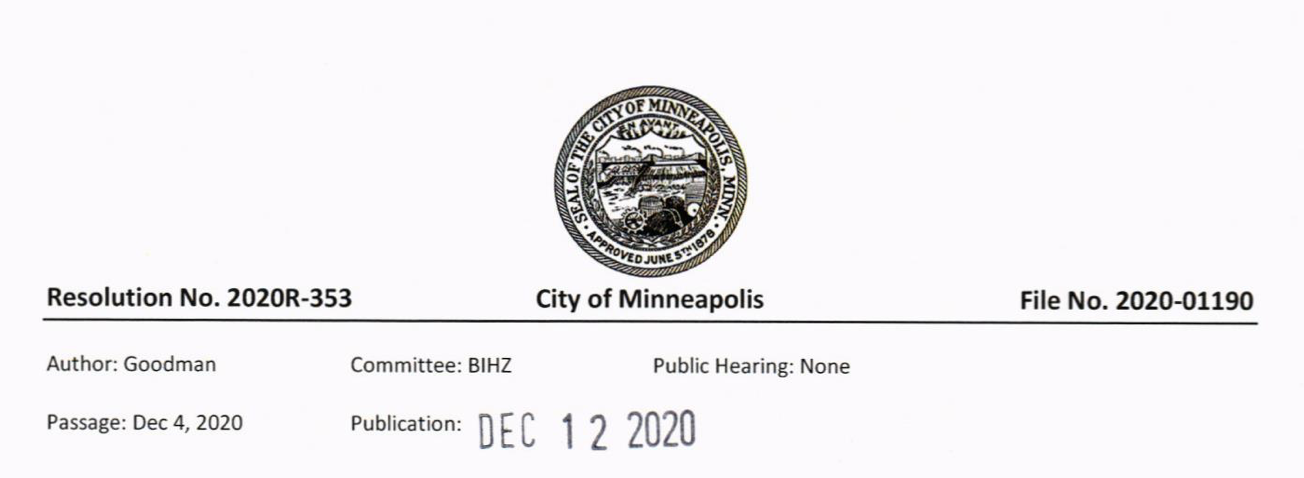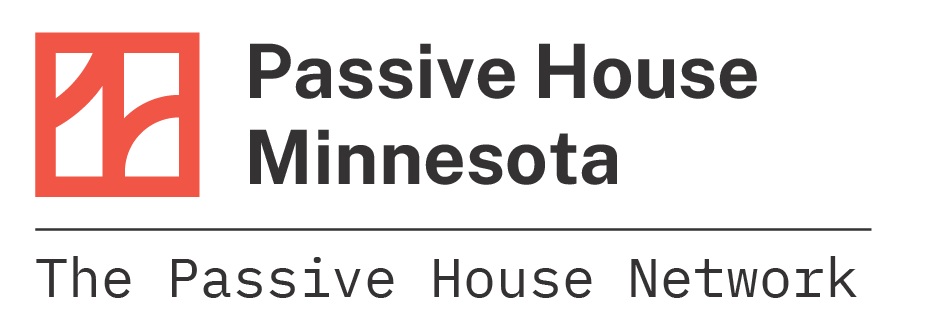Minneapolis Connects the Dots and Establishes Leadership in Building Climate Action

Minneapolis, MN, December 16, 2020 – The city of Minneapolis has instituted a new pilot incentive program to promote the construction of affordable housing to the Passive House Standard, to help meet the city’s climate emergency obligations.
On December 8, the Minneapolis City Council passed resolution No 2020R-353, titled Adopting a Sustainability Policy for City-supported one to three-unit new construction residential development. The resolution states in part “Whereas, buildings account for 71% of greenhouse gas emissions from Minneapolis: and Whereas, Climate Action Plan includes a strategy to “Require City-financed projects to meet an energy efficiency standard”;”. The resolution acknowledges that to act on climate, a more rigorous building energy efficiency standard is needed.
To help implement this new resolution, the City’s Division of Sustainability partnered with the Community Planning & Economic Development department to establish a needs-based pilot program. The Office of Sustainability will provide additional financing beyond the Minneapolis Homes Financing program commitments, to projects that meet a higher efficiency standard. The pilot funding incentive can reach up to 20% of total development costs but is not to exceed $90,000 per unit.
One pathway to receive this funding is certification to the Passive House Standard, by the Passive House Institute (PHI).
“We commend the Minneapolis City Council and city agencies for their leadership in connecting the dots and showing how we can address our climate and social equity crises hand-in-hand,” said Tim Eian, a local architect and Passive House Minnesota leader. “We look forward to working with Minneapolis leadership to expand on this effort and bring the benefits of energy efficient, resilient, healthy buildings to all our neighbors across this great city.”
Essential to achieving this action Passive House Minnesota members worked to help educate policymakers, council staff and the public about the benefits of Passive House buildings. As a chapter of North American Passive House Network (NAPHN), Passive House Minnesota brought together not just critical local expertise but knowledge and experience from across the US and from around the world.
“Many cities and states have aggressive carbon reduction policy goals in place, but so far few have connected the dots to the implementation of solutions like Passive House to drive down emissions, support affordability and enhance occupant health.” said NAPHN Board Chair, Bronwyn Barry. “To minimize fossil fuels and electrify effectively, our top priority must be on dropping energy demand. Passive House delivers that. Minneapolis is taking an important first step in this direction.”
The Passive House Standard results in high-quality affordable housing – providing occupant comfort, indoor air quality and resilience, while drastically reducing greenhouse gas emissions and associated ongoing utility bills.
# # #
About Passive House Minnesota (PHMN):
PHMN is a state-wide group of Passive House professionals and practitioners who aim to educate about and promote the Passive House building energy standard. PHMN is based in Minneapolis and is a chapter of the NAPHN.
About NAPHN:
The North American Passive House Network (NAPHN) is an independent national non-profit educational organization, based in New York, and affiliated with the International Passive House Association (iPHA) and the Passive House Institute (PHI), located in Darmstadt, Germany.
NAPHN has chapters based in New Jersey (www.njpassivehouse.com), Washington DC (www.naphnetwork.org), the Rocky Mountain Region (www.phrockymountains.com), Minnesota (www.passivehouseminnesota.org) and Western Pennsylvania (www.passivehousewpa.com).
NAPHN supports the widespread adoption of the international Passive House design and construction standards, building science principles and protocols, as a critical response to our climate crisis – providing unparalleled effectiveness in mitigating climate disruptions and adapting to rapidly changing environmental conditions.
NAPHN is focused on the inflection point between policy and implementation. We partner with leading stakeholders across all building sectors, including governments, professional associations, manufacturers, owners, builders, labor organizations, and educational institutions – to make the transformation complete. http://www.naphnetwork.org
About Passive House:
Passive House is an international building standard and methodology, applicable to buildings of all kinds from office buildings to hospitals, new-build and renovations, that results in a dramatic
drop in operational energy use, and more comfortable and healthy occupants – meant to aggressively mitigate our climate crisis while providing resilient adaptation.
The Passive House Standard was developed by the Passive House Institute (PHI), an independent scientific research organization, located in Darmstadt, Germany, and includes specific requirements for energy use and comfort of occupants. The Passive House Standard is being successfully applied to thousands of buildings and millions of square feet around the world, from Boston to Beijing.
The Passive House methodology starts with reducing cooling, dehumidification and heating loads by focusing, not on gadgets and active technology, but instead on fully integrated durable passive building components, such as proper continuous thermal-bridge-free insulation, continuous airtightness, high-performance windows and doors, and ventilation that includes a high-efficiency heat/energy recovery core, carefully calculated, and all integrated with the entire architectural process of design and construction. http://www.passivehouse.com http://www.passipedia.org
View an Introduction to Passive house video: https://youtu.be/G1u5q8IbCak
Not sure what Passive House means? Watch this video: https://youtu.be/fy9nnso306o



Thank you for all the education that you did to bring the Minneapolis City Council to the point where they were willing the pass “Adopting a Sustainable Policy for the City.” I applaud your work and wish you many more successes. I am retired from Twin Cities Habitat for Humanity where I was a site supervisor for 17 years where encouraged them build with as much energy efficiency as possible. I hope they will eventually do builds that can be certified to Passive House Standard.
David, thanks for your kind words. 2 projects are in the works at the moment. Fingers crossed.
Is the 20% funding for Multi Family construction or does it include single family dwellings as well? What commitment is required to access the funding? What must it be used for? Does PH building requirements add to the cost of construction but is weighed against the long term operating cost? I only see one or two older projects with estimated cost to build.
Ray, I recommend reaching out to CPED at the City of Minneapolis to get your specific questions answered. Here is their page with contact information: https://www2.minneapolismn.gov/government/departments/cped/